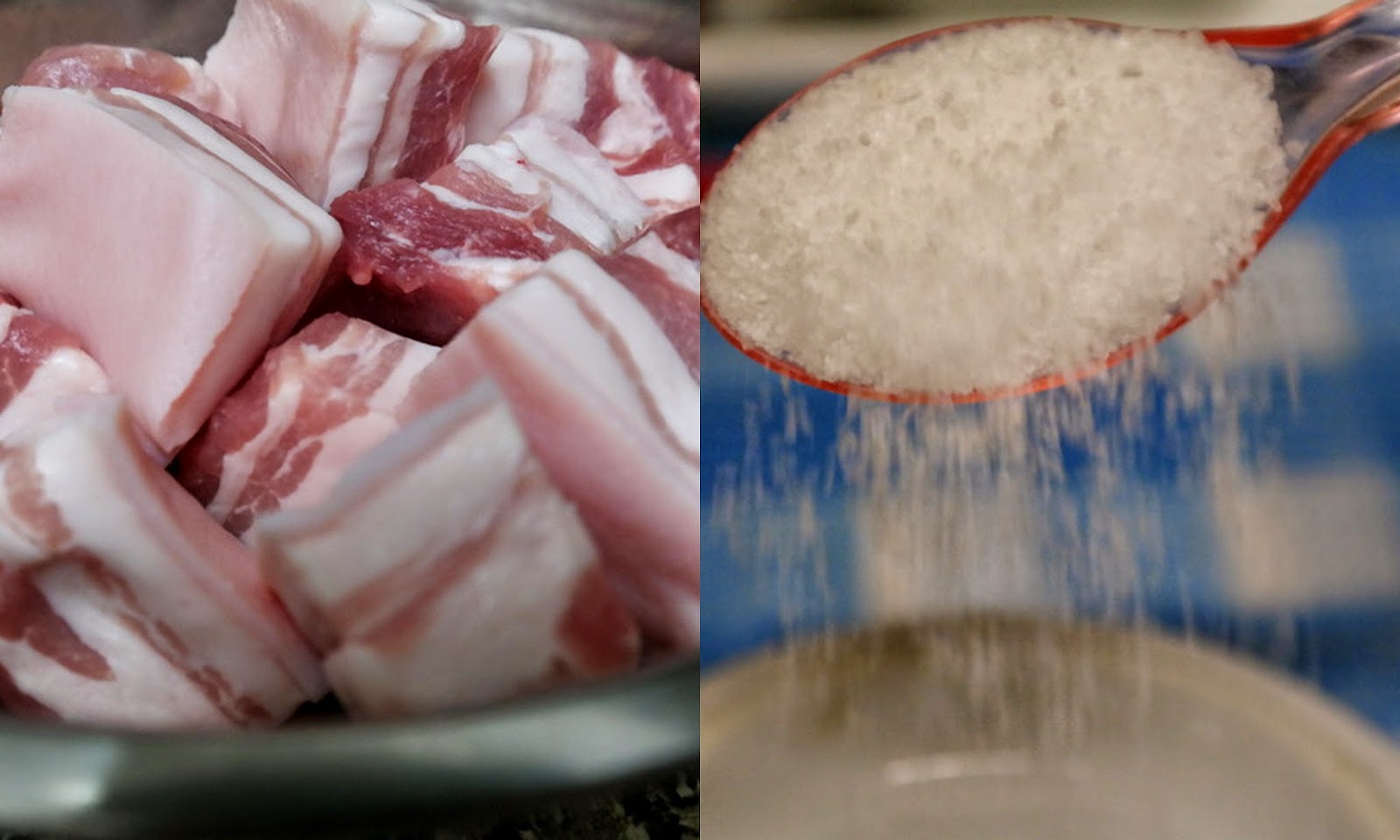As the Chinese New Year approaches, my thoughts turn to a winter Chinese delicacy, Jung. Yum Cha Restaurants and many Asian grocery stores have versions all year round but none are so good as the ones your mother made...
As the Chinese New Year approaches, my thoughts turn to a winter Chinese delicacy, Jung. Yum Cha Restaurants and many Asian grocery stores have versions all year round but none are so good as the ones your mother made for you as a child. I remember the kitchen filling up with steam as the huge metal pot (taller than me) would bubble away with the heady scent of sticky rice, salty pork and the herbal scent of the bamboo leaves they were wrapped in. Nothing beat the unwrapping of a freshly cooked Jung, scorching our fingers as you rushed to get the string and the leaves apart, then the first taste of the silky pork belly as it melted into the rice. Unfortunately, all good things take time and like all good Chinese recipes, this one needs a few days' preparation so:
Three Days Before Wrap Day:
Buy your Ingredients (the quantities below are per kilo of glutinous rice which should make approximately ten Jung, the final number you get will depend on how "courageously" you wrap!); any Asian grocery store should stock all but the pork belly which can be bought from your local butcher or supermarket:
250 gm pork belly
1 kilo glutinous rice
1/2 teaspoon MSG (monosodium glutamate - optional but hey, it's traditional)
25 g salt
100 g dried Adzuki or Mung Beans
30 dried bamboo leaves
12 cooked salted duck eggs (optional)
Also like all good Chinese recipes, you can add all manner of other things such as lapchong (chinese sausage), mushrooms, lentils, mung beans, etc., but I wanted to replicate the jung I had as a child so this is my mother's recipe (which I'm sure to be fiddling with as soon as I'm practiced enough with the basics).
Also like all good Chinese recipes, you can add all manner of other things such as lapchong (chinese sausage), mushrooms, lentils, mung beans, etc., but I wanted to replicate the jung I had as a child so this is my mother's recipe (which I'm sure to be fiddling with as soon as I'm practiced enough with the basics).
As soon as you get home:
Wash the pork belly and slice into thumb-sized chunks Rub a heaped tablespoon of salt into the pork and leave covered in your refrigerator to marinate.

One day before wrap day:
Unwrap your bamboo leaves, snip the hard stalks from the base of each bamboo
leaf and soak in a basin of cold water. Make sure to agitate the leaves
thoroughly and change the water at least three times. The bamboo leaves
should be pliable. (If you forget to do this the day before, don't panic, you can use boiling water on the dry leaves on wrap day. This is also good to remember if some of your leaves rip, as they are prone to do during your first wrapping attempts, and you end up needing more. Don't worry if they do, these can be used as the third outer leaf.)
Soak the beans in cold water.
Peel the duck eggs,
discarding the shell and the white (although the whites can be kept for
adding to a stir-fry or porridge in small quantities), cut the yolks in half if you think they're too big and put in a covered dish in the refrigerator.
Wash and drain the pork, sprinkle with a little fresh salt and re-pack in a dry container in the refrigerator.
On wrap day:Half an hour before you want to start wrapping, soak the sticky rice in a basin of cold water. After half an hour, rinse the rice and drain the rice through a sieve into a basin at least a third larger than the amount of rice you have. This is to ensure you have sufficient room in your basin to add in and mix the other ingredients. For each kilo of rice, add 25g of salt and 1/2 teaspoon of MSG, if using, to the rice. Stir through the beans and mix well with your hands.
Time to wrap!
Remove your bamboo leaves from the water but keep them covered with a wet tea towel so that they don't lose their pliability.
Bring all your ingredients to a large table and have a tray to catch any rice spillage.
Take one bamboo leaf with the fat end on the left and the pointy end to the right.
Bend it into a parabola shape and make a small pleated fold from the middle of the leaf to the bottom making a pointed pocket.
Scoop a little rice into the corner and two thirds of the way along the long ends of the leaf.
Top with a piece of pork belly and egg yolk if using.
Take another leaf and make a similar shape around the top edge of the
first leaf, overlapping a little and without a fold. This is to give
some height to the casing so that you can pack more rice in.
Top with another small scoop of rice mix and try to enclose the pork/egg completely.
Fold the bottom leaves up or to the right to envelope the rice.
Fold the side and top leaves in and cover with a third leaf if necessary
Bind with cooking twine.
Place as many Jung as your biggest saucepan will hold, cover with water and boil for at least 3 hours, replenishing the water if necessary (check every hour) or until the fat on the pork has rendered and the beans are tender.
Eat steaming hot immediately (or refrigerate or freeze and reheat) with a drizzle of sesame oil, white pepper and soy sauce to taste.















